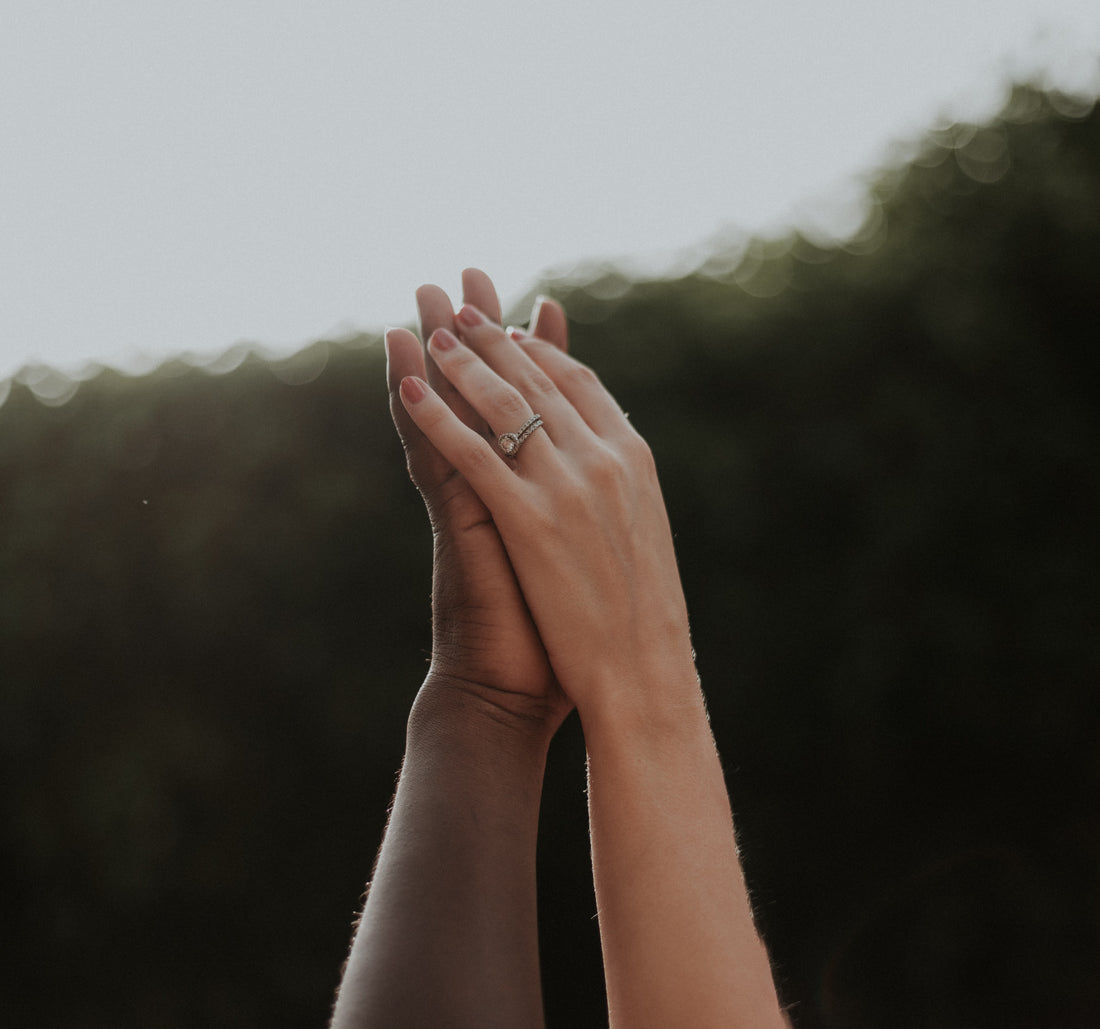The gender pain gap puts all women and menstruators at risk for untreated pain. A growing body of evidence around the relationship between race and pain demonstrates that women and menstruators of colour are even more likely to face mistreatment.
Find out how racism and sexism combine to create hurdles for women in pain and what we can do to close the gender pain gap for all menstruators.
White Women Are Already Facing the Gender Pain Gap, But Racism Widens This Gap Even More for Women of Colour
Men in pain tend to be taken more seriously than women in pain. When doctors downplay women’s health concerns, it puts women at risk of unnecessary suffering due to untreated pain, misdiagnoses, inadequate treatment, and more. In addition to the existing bias, women of other ethnicities face further challenges when it comes to the treatment of intense pain.
Systemic racism permeates every part of society, and it’s no different when it comes to doctors dismissing women’s pain. To understand the pain gap in the context of racism, we need to apply an intersectional lens.
How False Beliefs About the Biology of Different Races Leads to Mistreatment
The gender pain gap already causes a divide between how the pain tolerance of males vs. females is interpreted. But even when you consider only women in pain, racist stereotypes all too often lead to doctors dismissing women’s pain.
Race and Pain: False Belief that African Americans Have a Higher Pain Tolerance
The medical establishment has historically tried to explain away health disparities between black women and white women by claiming that black women are more susceptible to illness due to their biology and even their behaviour. Yet, women of colour have also historically been regarded as having a higher tolerance for pain and injury and have been subjected to unethical experimentation, such as the dosage experimentation of birth control on Haitain and Puerto Rican women in the 1950s.
Recent studies indicate the role of racial bias in pain assessment. One study found evidence that false beliefs about biological differences between BIPOC, people of color and white people are associated with racial disparities in pain assessment and treatment (Hoffman et al., 2016). These misconceptions included the belief that African Americans have thicker skin and that their nerve endings were less sensitive than white people’s.
Another study found that doctors were more likely to underestimate the pain of black patients compared to white patients (Staton et al., 2007). There are countless anecdotal reports of black women feeling disrespected by medical professionals.
A 2016 study published in Proceedings of the National Academy of
Sciences of the United States of America suggested that health care
providers may underestimate black patients’ pain in part due to a belief that
they simply don’t actually feel as much pain—a myth that dates all the way
back to the days of slavery. For centuries, the claim that black people were
biologically different from whites was “championed by scientists,
physicians, and slave owners alike to justify slavery and the inhumane
treatment of black men and women in medical research,” the authors write.
Black people were thought to have “thicker skulls, less sensitive nervous
systems,” and a superhuman ability to “tolerate surgical operations with
little, if any, pain at all.”
In the first phase of the study, over two hundred white medical students
and residents were asked whether a series of statements about differences
between black and white patients were true or false. Some of the statements
were true, while others—for example, “blacks’ skin is thicker than whites”
and “blacks’ nerve endings are less sensitive than whites”—were false.
They found that a full half of the respondents thought that one or more of
the false statements—many of which were “fantastical in nature”—were
possibly, probably, or definitely true. Also, notably, many of them didn’t
agree with the statements that were actually true; only half of the residents
knew that white patients are less likely to have heart disease than black
patients are.
When asked to read case studies of two patients complaining of
pain, one white and one black, the respondents who had endorsed more
false beliefs were more likely to believe that the black patient felt less pain,
and undertreated them accordingly.
(Source: Doing Harm: The Truth About How Bad Medicine and Lazy Science Leave Women Dismissed, Misdiagnosed, and Sick Hardcover – March 6, 2018
by Maya Dusenbery
- 156-7)
Read more: Does Sex Make Your Period Come Early and Understanding The Menstrual Cycle Chart
The Woman’s Body Was Studied by Males
Until relatively recently, medical science has been dominated by Caucasian men. That means research into female anatomy and conditions specific to women have not been as well-understood as they need to be to address things like ovarian pain and period discomfort. There is a significant lack of research funds invested in women’s health, and even less when it comes to the health of non-white women.
Many people wonder, ‘do women have a higher pain tolerance than men?’ but rather than merely wondering which gender has a higher pain tolerance, there should also be a focus on how race and pain influence health outcomes for ethnic minorities.
What is Behind Different Pain Levels Across Different Races?**
The assessment of pain is complicated due to individual differences in processing and expressing it. There are several ethnic disparities when it comes to many factors related to pain, and minority populations are more at risk for insufficient pain control (Manag, 2012).
There is a surprising gap in knowledge about the pain experience of people of different ethnicities in America. Hispanic Americans make up a significant and growing portion of the population, yet there is glaring lack of data (Hollingshead et al., 2016).
When there’s no obvious physical injury and medical providers need to rely on their judgement to assess patients, there’s a danger of unconscious bias. When doctors downplay women’s health concerns due to misconceptions about race and pain, it’s not just an inconvenience – sometimes, it’s a matter of life or death. Black women are two-to-three times more likely to die from pregnancy-related conditions than white women (Tucker et al., 2007).
This holds true even when accounting for education and socioeconomic differences. Black college-educated women who gave birth in New York City hospitals between 2008 and 2012 were more likely to suffer severe pregnancy or childbirth complications compared to white women who never finished high school (NYCDOHMH, 2016).
About Treatment of Pain - Real Life Evidence and Studies
Like that of most women in the United States, Jackie’s experience was
impacted not solely by gender bias. A growing body of research explores
how “implicit” bias—unconscious biases that are usually not linked to
consciously held prejudiced attitudes—contributes to disparities in medical
treatment based on many different factors, including gender, race/ethnicity,
class, and weight. “We want to think that physicians just view us as a
patient, and they’ll treat everyone the same, but they don’t,” says Linda
Blount, president of the Black Women’s Health Imperative. “Their bias
absolutely makes its way into the exam room.”
The evidence showing that patients of color, black patients especially,
are undertreated for pain in the United States is particularly robust. A 2012
meta-analysis of twenty years of published research found that, across all
the studies, black patients were 22 percent less likely than whites to get any
pain medication and 29 percent less likely to be treated with opioids. Latino
patients were also 22 percent less likely to receive opioids. As is the case
with gender disparities, racial/ethnic disparities were most pronounced
“when a cause of pain could not be readily verified.” But black patients
were less likely to get opioids after traumatic injuries or surgery too. And
the authors warned that the gap “does not appear to be closing with time or
existing policy initiatives.”
In explaining this disparity, experts point to a stereotype—one widely
held by health care providers—that black patients are more likely to abuse
prescription painkillers. That clearly seemed to be part of the problem in
Jackie’s case; she was often accused directly of seeking drugs. Not that it
would justify the treatment gap if that stereotype were based in truth, but it
is, in fact, entirely false. White Americans have the highest rates of
prescription drug abuse, are most likely to die from drug overdoses, and, for
that matter, use illegal drugs in general at the same or higher rates as people
of color do.
The fact that the racial pain-treatment gap extends to children
suggests that it’s not just the assumption of drug seeking at work, though. A
2015 study found that white children with appendicitis were almost three
times as likely as black children to receive opioids in the emergency room.
(Source: Doing Harm: The Truth About How Bad Medicine and Lazy Science Leave Women Dismissed, Misdiagnosed, and Sick Hardcover – March 6, 2018 by Maya Dusenbery 156-7)
AIMA is Saying No to Racism and Sexism
Founded by a team of intersectional feminists, AIMA is dedicated to empowering menstruators and encouraging more funding and conversation around period pain, racism, and the pain gap. We do this through our values of transparency, science, and accountability.

Anyone who suffers from an extremely painful period or discomfort in the lower abdomen knows the impact untreated pain can have on your quality of life. At AIMA, we’re committed to providing safe, effective solutions that support women with period discomfort so that they can continue their routines with effective relief.
Do you have a story about how race and pain have interacted to shape your experience with your period pain or other types of chronic pain? If so, please email us to share your story about race, period discomfort, and the gender pain gap so that we can break the silence and raise awareness (#myperiodstory)!

